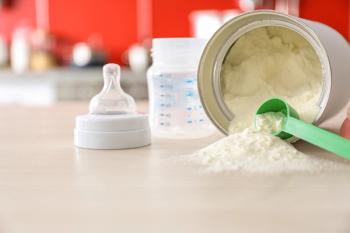
Neonatal Mortality and Severe Morbidity is Higher in Male Infants Than Females
The cause behind these disparities remain unclear and but is likely to be caused by immunological, hormonal, and genetic factors unique to both sexes.
Male infants have a higher chance of developing severe neonatal morbidity and mortality compared to infant females, according to a recent study published in the Australian and New Zealand Journal of Obstetrics and Gynaecology (ANZJOG).
Though male infants are typically born with a higher birthweight than females, they are more at risk of a variety of perinatal and neonatal outcomes. Females often exhibit a survival advantage compared to males, researchers said in the study.
The cause behind these disparities remain unclear and but is likely to be caused by immunological, hormonal, and genetic factors unique to both sexes, the study said. Researchers aimed to look deeper by investigating obstetric and perinatal outcomes by infant sex from 28 weeks in the 14-year retrospective cohort study of over 130,000 births in Australia. Of the births, 67,068 were male and 63,065 were female
Between January 2008 and December 2021, it was found male infants had overall higher rates of neonatal death (0.12% vs 0.06%) and severe neonatal morbidity (12% vs 9.1%). Of the 117 recorded cases of neonatal deaths, 79 were male and 38 were female infants . The odds of overall perinatal mortality — stillbirth and neonatal death — were higher for male infants (aOR 1.30, 95% CI 1.08–1.56). The difference in severe neonatal morbidity when ranked by gestational age at birth only remained significant from more than 35 weeks gestation.
Regardless of infant sex, rates of neonatal mortality and morbidity were lowest at 39 weeks gestation. Rates of preterm birth and operative birth were also higher for male infants.
The most common Perinatal Society of Australia and New Zealand Perinatal Death Classification categories for male versus female neonatal deaths — excluding congenital anomalies — were preterm birth (67% vs 33%), antepartum haemorrhage (67% vs 33%), hypoxic peripartum death (90.9% vs 9.1%) and hypertensive disorders (80% vs 20%). There was no difference in stillbirth rates between the two cohorts.
According to researchers, further investigsting suggested to better understand sex-specific factors as well as the influence of possible differences in antenatal and intrapartum care that may increase the chances of male infants of the risks of mortality and morbidity as these may help guide clinical care.
Newsletter
Get the latest industry news, event updates, and more from Managed healthcare Executive.

















































